5 Best Aquarium Soil: High-Quality Substrate For Your Tank
Seeking the ideal substrate to nourish your aquatic plants? Curious about the 5 Best Aquarium Soils that guarantee optimal growth? Dive into our guide to discover nutrient-rich options renowned for promoting plant health and vibrant colors.
From enhancing root development to stabilizing water chemistry, these soils provide a fertile foundation for your underwater garden. Explore their features and benefits to create a thriving aquatic ecosystem that captivates both you and your aquatic residents.
Quick Recommendations:
- Fluval 12693 Plant and Shrimp Stratum: Excellent water quality, promotes plant growth, shelter for newborn shrimp, initial water discoloration.
- Aqueon Plant and Shrimp Aquarium Substrate: Clay-based, ideal for freshwater plants and shrimp, enhances aquascaping, initial water cloudiness.
- CaribSea Eco-Complete Planted Aquarium Substrate: Mineralogically and biologically complete, promotes robust plant growth, includes beneficial bacteria, slightly more expensive.
- Aqua Natural Galaxy Sand Bio-Substrate: Contains live nitrifying bacteria, sustainably sourced, triple washed, initial water clouding.
- LANDEN Aquarium Soil: Nutrient-rich, promotes beneficial bacteria, mildly acidic conditions, possible initial ammonia spikes.
Comparison Table: Best Aquarium Soils
| Product Name | Image | Key Features | Ideal For | Pros | Cons | Purchase Link |
|---|---|---|---|---|---|---|
| Fluval 12693 Plant and Shrimp Stratum |  | Porous structure, neutral to slightly acidic pH, promotes plant growth and shelters newborn shrimp | Aquarists with freshwater plants and shrimp | – Swift colonization of beneficial organisms – Sustains ideal pH for plant growth – Provides shelter for newborn shrimp | – Lightness may cause difficulty in plant burial | CHECK PRICE |
| Aqueon Plant and Shrimp Aquarium Substrate |  | Clay-based, maintains shape, promotes plant growth and aquascaping | Aquarists with freshwater plants and shrimp | – Maintains shape over time – Enhances aquascaping and plant growth – Positive feedback for visual appeal | – Initial cloudiness in water | CHECK PRICE |
| CaribSea Eco-Complete Planted Aquarium Substrate |  | Mineralogically and biologically complete, contains essential trace elements, promotes robust root growth | Aquarists promoting healthy plant growth in freshwater aquariums | – Comprehensive nutrient composition – Encourages robust plant growth – Highly porous for optimum diffusion | – Higher cost compared to other substrates | CHECK PRICE |
| Aqua Natural Galaxy Sand Bio-Substrate |  | Seeded with live nitrifying bacteria, sustainably sourced, promotes rapid cycling | Aquarists seeking a natural and effective substrate | – Contains live bacteria for instant cycling – High quality and sustainably sourced – Large surface areas for beneficial bacteria | – Initial water clouding | CHECK PRICE |
| LANDEN Aquarium Soil |  | Nutrient-rich, supports healthy plant root system, mildly acidic conditions | Aquarists maintaining optimal water conditions in their aquarium | – Rich in essential nutrients – Promotes clean water and beneficial bacteria growth – Ideal for nano tanks | – Potential initial ammonia spikes | CHECK PRICE |
Understanding the Role of Aquarium Soil in a Healthy Tank
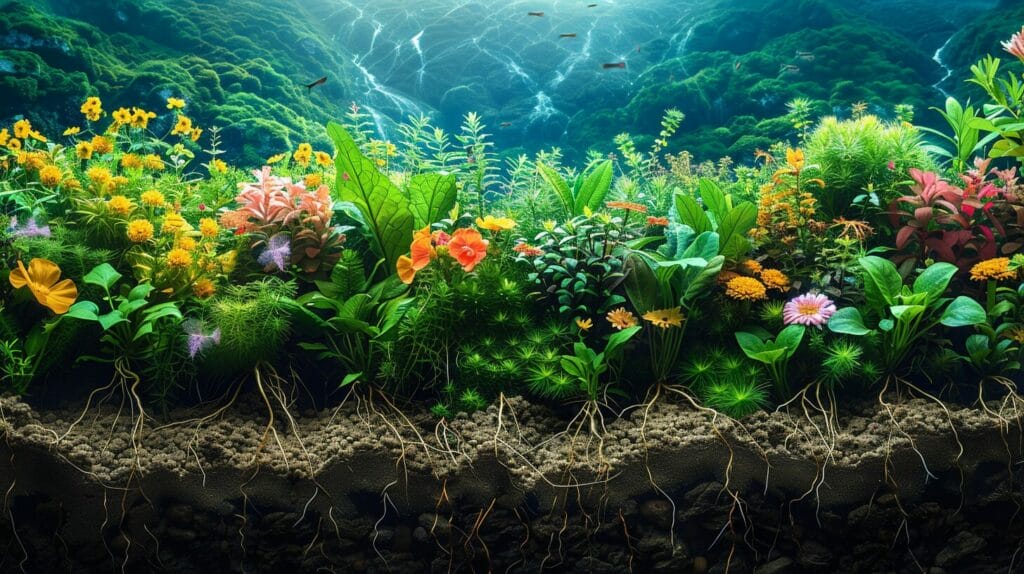
Aquarium soil plays a crucial role in providing a foundation for aquatic plants and impacting the overall conditions within your aquarium. High-quality soil contains essential nutrients that benefit plant growth and offers a stable base for root establishment. The right soil acts as a source of nourishment, aiding in plant development and well-being.
Evaluating Different Types of Aquarium Substrates: From Soil to Gravel
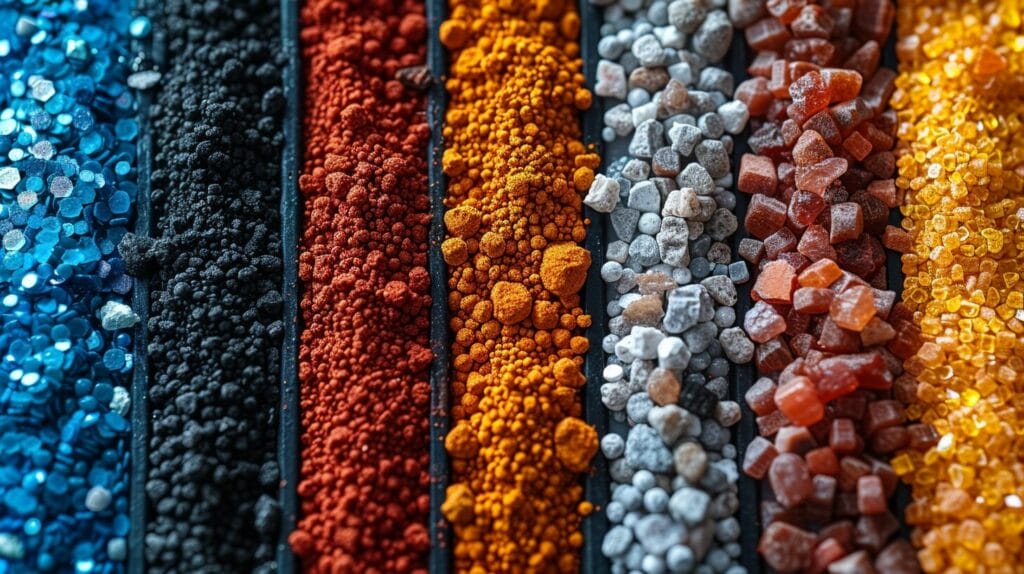
While aquarium soil (aquasoil) is favored for its nutrient-rich composition that promotes healthy plant growth, it can cloud the water initially. Gravel, in contrast, is aesthetically pleasing and easier to clean, allowing good water circulation. Sand offers a natural look but requires careful maintenance to avoid anaerobic pockets. The best substrate choice depends on your specific needs and desired aquatic environment.
5 Best Aquarium Soil
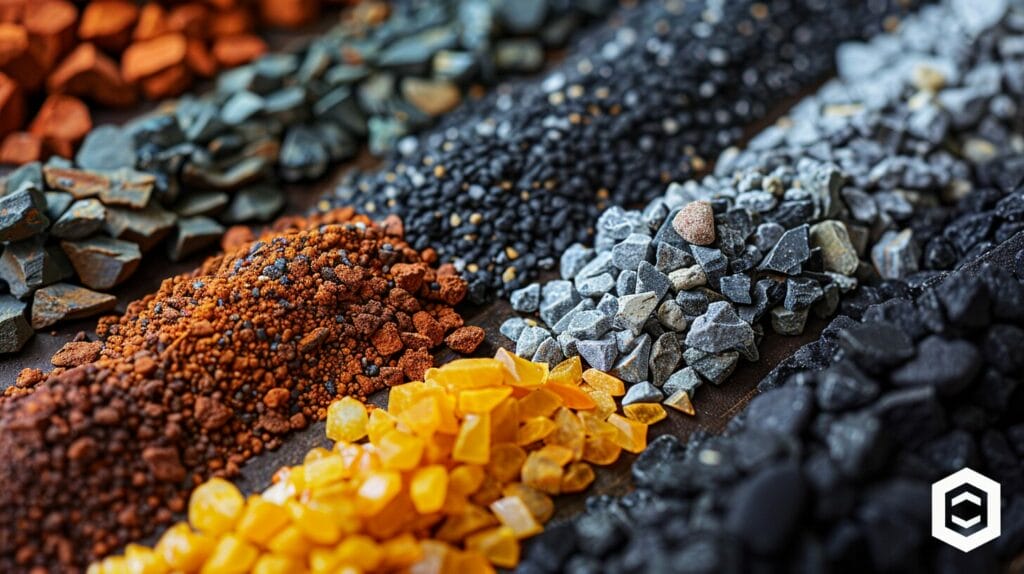
Let’s discuss the best aquarium soil options available for your tank, including Fluval, Aqueon, CaribSea, Aqua Natural, and LANDEN.
These brands provide a variety of soil types that cater to different aquatic plants‘ needs, ensuring a healthy environment for your fish.
Selecting the correct aquarium soil is essential for plant growth, water quality, and overall tank aesthetics.
1. Fluval

Fluval 12693 Plant and Shrimp Stratum is perfect for creating a thriving environment for freshwater fish and plants. It promotes excellent water quality and plant growth, although it may initially discolor the water. Its porous structure aids the rapid colonization of beneficial bacteria, maintaining a neutral to slightly acidic pH suitable for plant growth.
Best For: Aquarists looking to create a thriving environment for freshwater plants and shrimp in their tanks.
Pros:
- Swift colonization of beneficial nitrifying organisms
- Sustains neutral to slightly acidic pH range for plant growth
- Provides shelter for newborn shrimp
Cons:
- Lightness may cause difficulty in plant burial
2. Aqueon

Aqueon Plant and Shrimp Aquarium Substrate is clay-based, ideal for supporting plant growth and enhancing aquarium aesthetics. Its stable structure and aesthetic appeal make it a favorite among aquarists, though it may cause initial water cloudiness.
Best For: Aquarists looking for a reliable clay-based substrate to promote freshwater plant growth and enhance aquarium aesthetics.
Pros:
- Maintains shape over time, suitable for various freshwater plants, shrimp, snails, and tropical fish.
- Promotes the growth of freshwater plants and enhances aquascaping.
- Received positive feedback for visual appeal in tanks and ease of cleaning.
Cons:
- Some users experienced initial cloudiness in water.
3. CaribSea

CaribSea’s substrate is complete with essential nutrients for robust plant growth. Its porous grains ensure excellent diffusion, and the inclusion of live bacteria helps establish a natural balance, making it an effective choice for lush aquatic environments.
Best For: Aquarists looking to promote healthy plant growth in freshwater aquariums with a complete substrate solution.
Pros:
- Contains major and minor trace elements for plant nourishment
- Encourages healthy plant root growth
- Highly porous spherical grains for optimum diffusion performance
Cons:
- May be more expensive compared to other substrates
4. Aqua Natural

Aqua Natural Galaxy Sand Bio-Substrate is seeded with live bacteria for instant cycling, making it an excellent choice for planted tanks. It creates a natural beauty and supports beneficial bacteria growth, although it may initially cloud the water.
Best For: Aquarists looking for a natural and effective substrate that promotes rapid cycling and supports aquatic plant growth.
Pros:
- Contains bio-active live nitrifying bacteria for instant aquarium cycling.
- Sustainably sourced, triple washed, and kiln dried for high quality.
- Creates natural beauty with large surface areas for beneficial bacteria colonies.
Cons:
- Initial clouding of water reported by some users.
5. LANDEN

LANDEN aquarium soil is nutrient-rich and supports a healthy plant root system, ideal for nano tanks and various aquatic plants. Its structure promotes beneficial bacteria growth, although it may cause initial ammonia spikes.
Best For: Aquarists looking to promote healthy plant growth and maintain optimal water conditions in their aquarium.
Pros:
- Provides essential nutrients for plant and shrimp health.
- Promotes beneficial bacteria growth for clean water.
- Ideal for nano tanks and various aquatic plants.
Cons:
- Initial ammonia spikes may occur.
Tips for Setting Up and Maintaining Good Soil Conditions in Your Aquarium
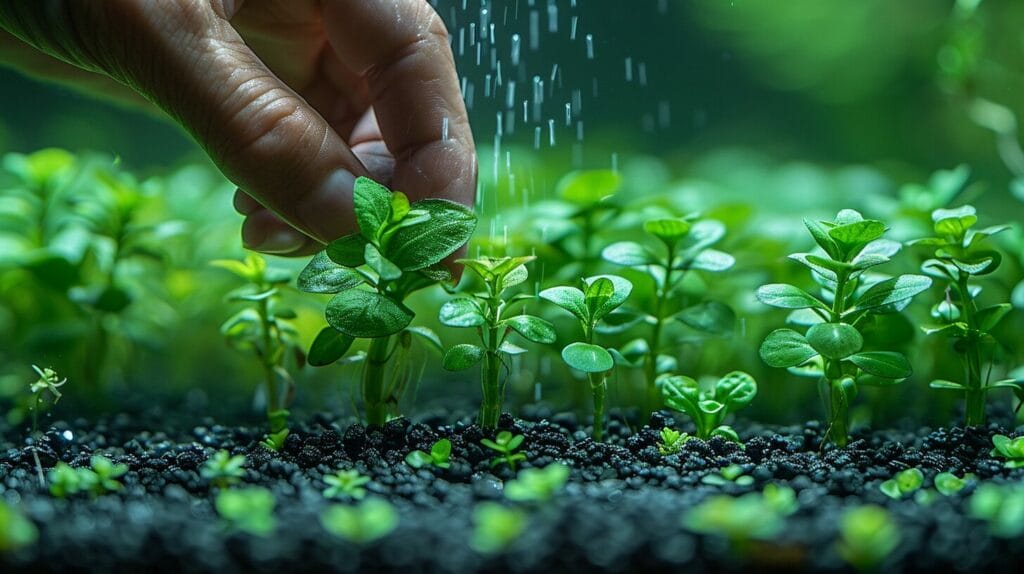
To guarantee optimal soil conditions in your aquarium, regularly test the pH levels and nutrient content of the substrate. This step is essential for the overall health of your aquatic plants and the well-being of your aquatic ecosystem. When setting up your aquarium with soil, make sure proper layering with a base of gravel followed by a nutrient-rich substrate like controsoil. This layering technique promotes good drainage and aeration for the roots of your plants, aiding in their growth and development.
Maintaining good soil conditions involves monitoring and adjusting the pH levels as needed to suit the plant species in your aquarium. Nutrient content should also be checked regularly to prevent deficiencies that can hinder plant growth. Keep an eye out for any signs of nutrient imbalance or soil compaction, which can lead to root rot and other plant issues. By staying proactive and attentive to your aquarium soil, you can create a thriving environment for your aquatic plants to flourish.
Which is More Important for a Healthy Aquarium: Quality Substrate or Enhanced CO2 Levels?
When it comes to maintaining a healthy aquarium, both quality substrate and enhanced CO2 levels play crucial roles. However, to ensure optimal plant growth and overall water quality, investing in the best aquarium CO2 diffuser can make a significant difference. Balancing these elements will lead to a thriving aquatic environment.
Enhancing Your Aquarium Plant Growth with the Best Soil Choices
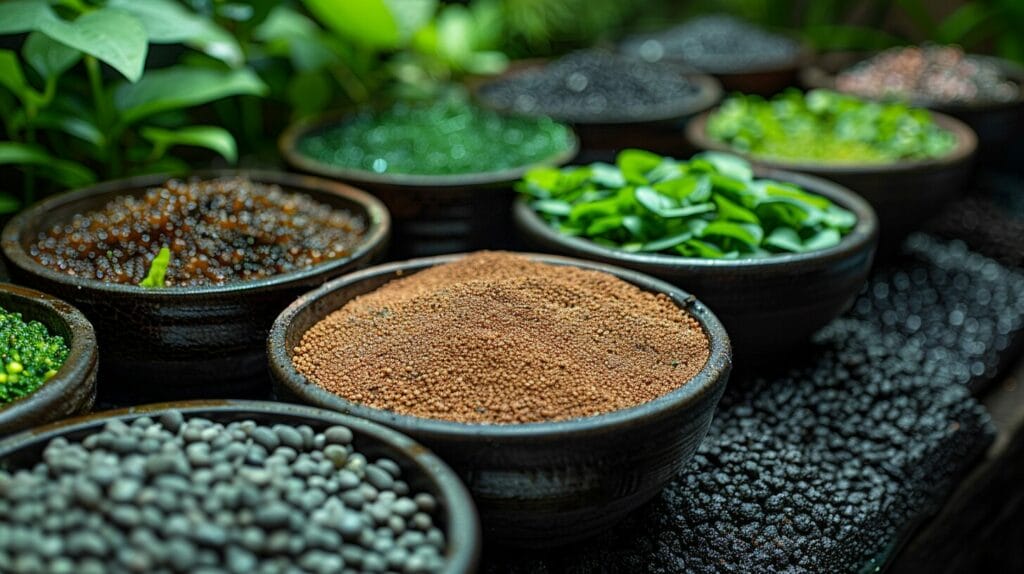
Improve your aquarium plant growth by choosing the ideal soil type suited to your specific plant species. The right aquarium soil or substrate can make a significant difference in the health and growth of your aquatic plants. Different plant species have varying requirements when it comes to substrate composition, so it’s essential to select the best option for your aqua garden. Here are three popular choices of aquarium soil that can help enhance your plant growth:
| Aquarium Soil Type | Features | Best For |
|---|---|---|
| Aqua Soil | Rich in nutrients, promotes root growth | Rooted plants like Amazon swords |
| Sand | Easy to clean, allows roots to spread | Carpeting plants such as dwarf baby tears |
| Dirted Substrate | Nutrient-rich, supports diverse plant species | Planted tanks with a variety of flora |
Can I Use Aquarium Root Tabs with Aquarium Soil for Better Plant Growth?
For the best aquarium root tabs, you can use them with aquarium soil to promote healthy plant growth. By combining these two elements, you can provide your aquatic plants with the essential nutrients they need to thrive. This can result in lusher, greener, and more vibrant plants within your aquarium.
Conclusion
To sum up, selecting the appropriate aquarium substrate is crucial for establishing a flourishing and vibrant tank environment. By choosing top-notch soil and keeping optimal soil conditions, you can promote the development of your aquatic plants and design a stunning underwater scenery.
Take into account the 5 top aquarium soil choices highlighted in this article to guarantee the success of your aquarium setup. Happy fishkeeping!
Frequently Asked Questions
Can Aquarium Soil Be Used in Saltwater Tanks or Is It Only Suitable for Freshwater Tanks?
Yes, you can utilize aquarium soil in saltwater tanks. It offers essential nutrients for plant growth and helps in biological filtration. Just make sure to select a substrate appropriate for marine environments to uphold water quality.
How Often Should Aquarium Soil Be Replaced or Replenished in Order to Maintain Optimal Plant Growth?
To maintain peak plant growth, replace or replenish aquarium soil every 12 to 18 months. It guarantees nutrients stay available for your aquatic plants. Regular replacement promotes a healthy tank environment and supports vibrant plant life.
Are There Any Specific Water Parameters That Should Be Monitored When Using Aquarium Soil in a Tank?
When using aquarium soil, monitor water parameters like pH, ammonia, nitrites, and nitrates regularly. These factors impact the health of your tank’s ecosystem. Keep a close eye on them to guarantee a thriving aquatic environment for your plants and fish.
Can Aquarium Soil Be Used in Conjunction With Other Types of Substrates, Such as Gravel or Sand?
Yes, you can use aquarium soil with other substrates like gravel or sand. Mixing substrates can create a visually appealing tank while providing diverse benefits for your aquatic environment. Experiment to find the perfect blend for your tank!
How Can I Prevent Algae Growth When Using Aquarium Soil in My Tank?
To prevent algae growth when using aquarium soil in your tank, guarantee proper lighting duration, maintain balanced nutrients, regulate water changes, and consider adding algae-eating species. Consistent maintenance and a healthy ecosystem help control algae.
Last update on 2024-07-27 / Affiliate links / Images from Amazon Product Advertising API







